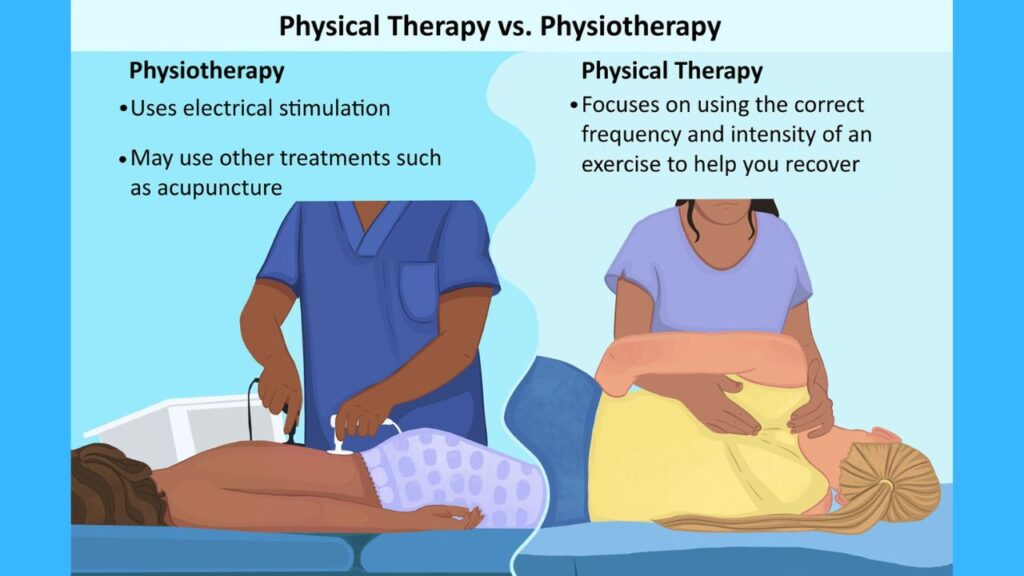Best Kinesiology Clinic in New Delhi
What is the Role of a Physiotherapist / Kinesiologist?
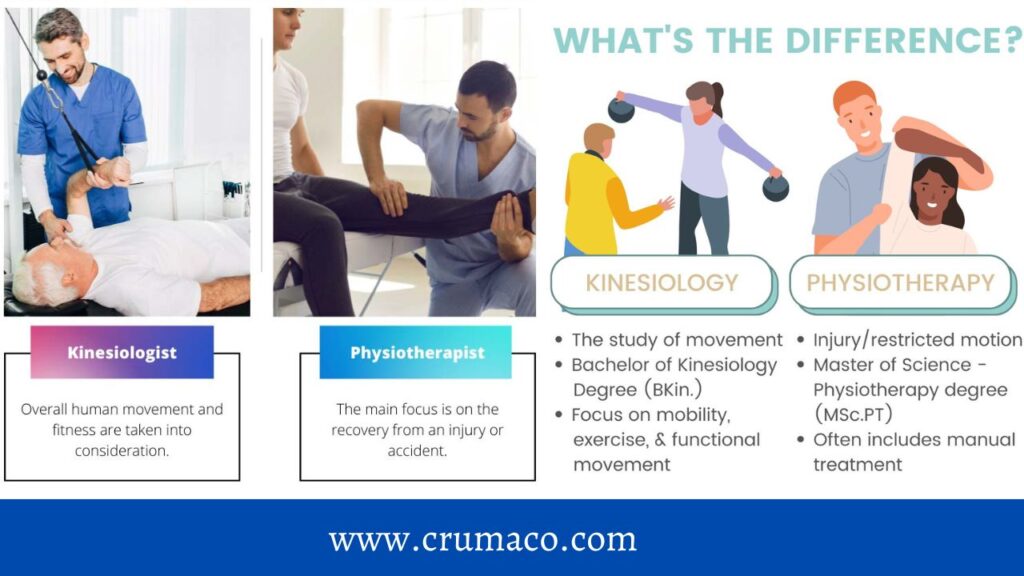
You may have been referred to a physiotherapist by your doctor if you have been ill or injured and unable to move or carry out daily tasks. In addition to managing pain, balance, mobility, and motor function, physiotherapists help patients with balance and mobility.
It is common for people to seek the help of a physiotherapist at some point in their lives. You may have been referred to one after a car accident, after surgery, or if you suffer from low back pain. They treat patients with various conditions. Crumaco is one of the best Best Kinesiology Clinic in New Delhi.
For many people, physiotherapists conjure up the image of someone running onto a sports pitch to treat an injured player. Physiotherapy is used in a variety of settings and fields of medicine.
What Does a Physiotherapist Do?
A physiotherapist develops customised programs for patients to restore their functionality and movement as much as possible. They are trained to treat patients whose function and movement are impaired by:
- Disease
- Health conditions
- Injury
- Environmental factors
- Ageing
- Disorders
- Weight issues
Physiotherapists achieve this by using a variety of methods, including:
- Have the patient do certain exercises
- Massage muscles
- Use muscle stimulation devices
- Manipulate joints
- Teach certain lifestyle activities like walking, posture, etc.
- Stretching muscles
In addition to addressing your physical well-being, they also address your emotional, psychological, and social well-being through a holistic (whole-body) approach. Their work encompasses the prevention, education, intervention, rehabilitation, and treatment at all stages of healthcare.Physiotherapists strive to improve your quality of life.
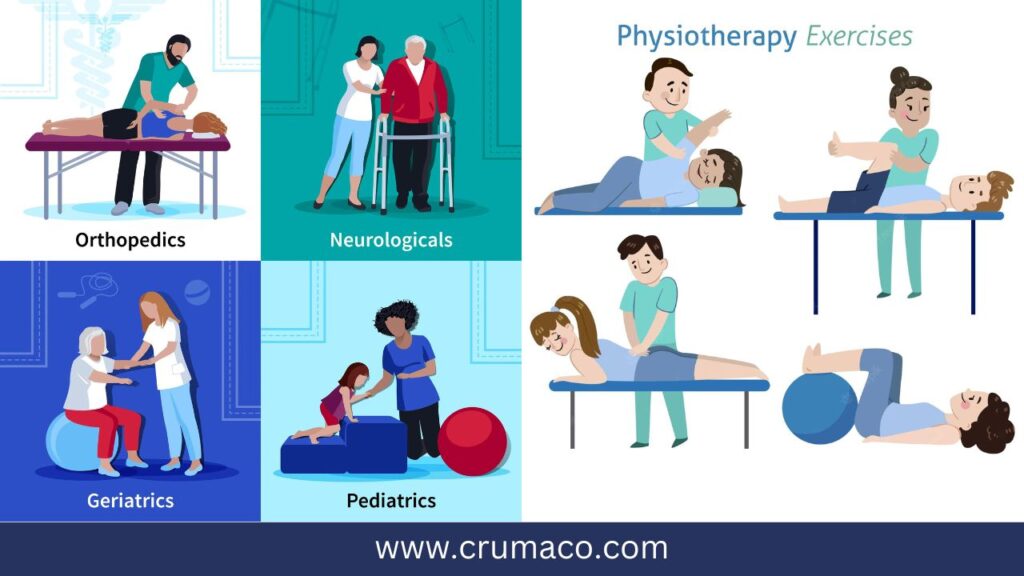
Massage therapy and physiotherapy
Although massage therapists formed the majority of practitioners in the early years of physiotherapy, we have progressed and developed as a profession. Physiotherapy is an evidence-based science that targets the adaptation of a movement.
Physiotherapists may employ massage techniques to treat patients, but this is only a small part of our expertise.
When massage is combined with exercises to increase flexibility, pain, stiffness, trigger points, and muscle tension can often be relieved.
Is physiotherapy the same as physical therapy?
Physical therapy or physiotherapy
It is a form of rehabilitative medicine that helps patients increase their physical ability and maintain or recover from it.
A physical therapist or physiotherapist is an individual who works with patients whose movements are impaired by disease, age, or environmental factors.
In addition to physical therapy, any disease or injury that requires physical intervention may be treated with it.
Through prevention, intervention (treatment), promotion, habilitation, and rehabilitation, the physical therapist’s primary role is to maximise patients’ quality of life and movement potential.

Individuals can be habilitated by making them capable of doing something they are not yet capable of doing.
The definition of rehabilitation is the process of restoring the ability of a person to do something that they were once able to do. Still, it can no longer do properly or at all – i.e. to make them fit or capable again.
In simple terms, promotion is the process of enabling people to be more in control of their health and improve it.
Unlike alternative therapies, physical therapy is a clinical health science. It is not a form of alternative therapy but rather a clinical health science. To obtain the health education necessary to prevent, diagnose, treat, and rehabilitate patients with physical problems, physical therapists study various medical science subjects in medical school, including anatomy, pharmacology, physiology, and many more.
In most countries, physical therapists must be fully qualified and registered by law to work in hospitals, general practices (GPs), private practices, and the community. In most countries, a physical therapist will work in hospitals, the community. Physical therapists must have a university degree in physical therapy or a university degree in health science that includes a course in physical therapy to be registered to become a physical therapists. like
There is no doubt that physical therapists are experts in examining and treating patients suffering from diseases such as cardiothoracic, musculoskeletal, and neuromuscular disorders, focusing on those conditions and problems that impede their ability to move and function efficiently.
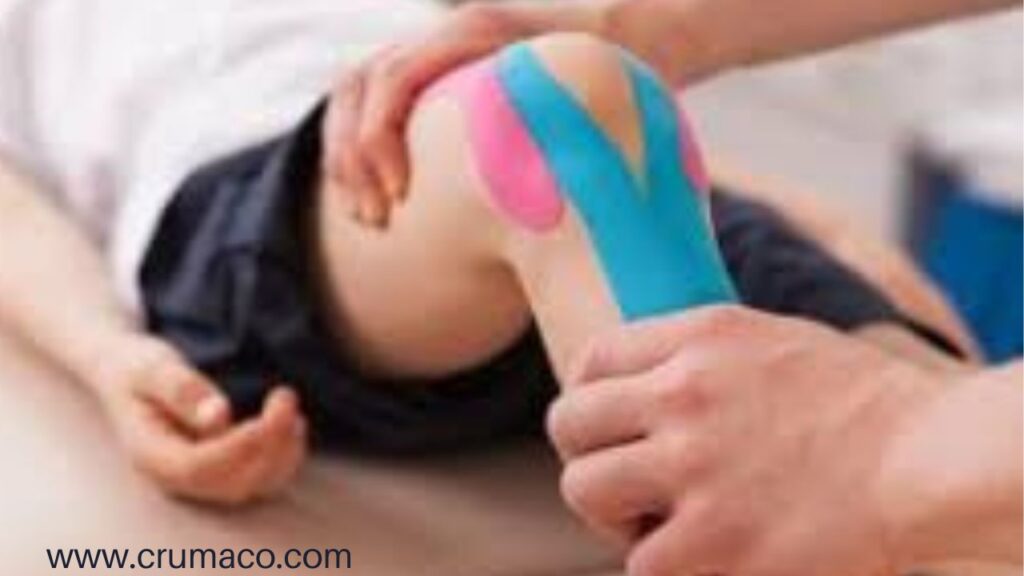
Physiotherapy has become a crucial part of all branches of medicine. Today, physiotherapy has become an important discipline in all aspects of our life. It plays numerous roles in our everyday lives.
1. Pain Relief:
It is possible to relieve pain through physiotherapy. By using a variety of modalities such as ultrasound, TENS, IFT, wax baths and exercise therapy, physiotherapy helps relieve the pain associated with various orthopaedic conditions such as frozen shoulder, arthritis, tendonitis, muscle tears, sprains and many more.
2. Reducing the Risk of Fall:
Physiotherapy is a physical therapy that helps patients improve their balance and prevent falls by teaching them balancing exercises. Staying active may improve your health and well-being, your balance, and your legs’ strength.
3. Avoid Surgery:
The treatment of certain conditions may require Surgery in some cases. Still, in other cases, it can be treated with physiotherapy, which helps reduce post-surgery complications and is more cost-effective than Surgery.
4. Post Fracture Stiffness:
There are times when a fracture can restrict joint movement after the plaster has been removed or after surgical intervention is performed. Physiotherapy can be useful in improving the joint’s range of motion, strengthening weak muscles and making them functional for everyday activities.
5. Assist Surgery:
Several surgeries require that muscles be strengthened before the Surgery. As a result, a patient is more likely to recover early after the Surgery. In addition to total knee replacements, spine surgeries, hip replacements, frozen shoulder capsular release surgeries and ligament repair surgeries, several other conditions require such a procedure.
6. Stroke Rehabilitation:
During the first three months of treatment, it is possible to reverse the effects of stroke on the body’s limbs. This can be done through the use of appropriate exercises.
7. Manage Heart Disease:
The role of physiotherapy has a significant effect on post-CABG patients. Physiotherapy will assist in clearing the lung secretions, mobilizing the patient, and improving the ejection factor so that the patient can recover more quickly.
8. Manage Lung Disease:
Physiotherapy can help in many conditions like bronchitis, pneumonitis, emphysema, bronchiectasis, asthma and so on. Chest physiotherapy helps in the removal of lung secretions. It removes the sputum from the lungs and clears chest congestion.
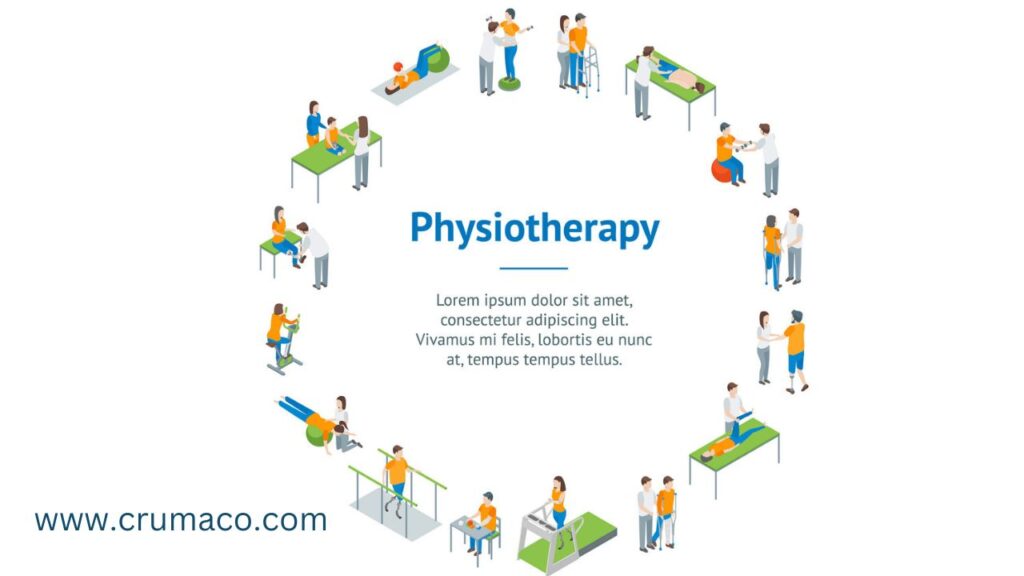
Conclusion
A detailed discussion of physiotherapy in this blog was made, in addition to a detailed discussion of the courses related to the discipline. This blog also discussed in detail what physiotherapy? Physiotherapists help patients recover from a serious illnesses.

